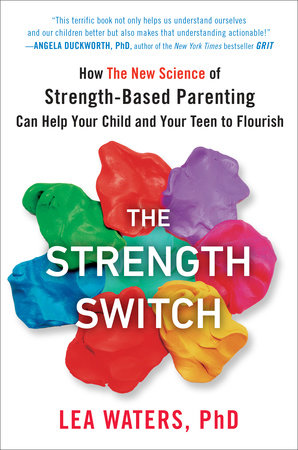When Reading Is Hard: A New Way to Help Your Child Move Forward
by Lea Waters, Ph.D.
There’s no question that for some kids, reading can be challenging. And for good reason: Reading draws on all kinds of complex neurological processes. How can parents support kids in learning the skill of reading without adding to the pressure the child may already be feeling?
Strength-based parenting is a new, powerful way to help you notice your child’s strengths and then find natural opportunities for those strengths to be developed — including when your child is grappling with a challenge.
A strength is more than just something your child is good at. Psychologists define a strength as something your child does well (high performance), happily (high energy), and often (high use). Strengths can be skills like science, art, and soccer, or character traits like persistence, curiosity, and competitiveness. Studies have found that helping your kids play to their strengths helps them to develop resilience, build optimism, do better at school, handle friendship stress, and much more.
Why do kids derive these benefits? Our strengths energize us because they come naturally to us. They’re not as tiring as when we’re slogging along trying to improve our weaknesses. We feel at our best, most authentic, and most motivated when we use them. That’s why showing your child how to use his strengths to work on weaknesses helps him support himself when he’s struggling.
Here are four ways to use strength-based parenting to help with reading challenges:
1. Help your child tune into his distressing emotions and the story he’s telling himself. How does he feel when he opens the book or sees words he can’t figure out? If he says “I’m stupid” or “I’ll never get this,” ask, “Do you think those thoughts are helpful or true?”
2. Talk about strengths your child has that he could bring to the situation and that would change his self-talk. Help your child identify his strengths and shift his self-talk accordingly, such as: “Reading isn’t always easy for me, but I know I’m persistent and can stick to the task. I’m curious and can learn new things. I can ask for help from my parents or my teacher. There are lots of other things I’m good at, like baseball, building things, and making friends.”
3. Give strength-based praise. This is praise that acknowledges action (what the child did that was successful, so she can replicate her success) and acknowledges strengths (the strengths the child had that helped her). For example: “You used your persistence [strength] to stick to the task of reading a few pages of the story each night until you finished it [action], even when you were tired and wanted to play computer games.” Or, “You used your competitiveness [strength] to ‘win’ at getting this reading assignment done [action]. Good work!”
4. Practice strengths-spotting. Reading together is a great way to do this. Talk with your child about the strengths you’re seeing in the characters. Are there examples of bravery, curiosity, kindness, humor, or zest? You can also practice noticing one strength in your child each week and having a conversation together about it. Both of these activities will hone the whole family’s strengths-spotting skills in a way that’s fun and low-pressure for everyone. Then, at homework time, it can be easier to suggest that your child draw on her strengths to get to the finish line.
While reading may not become your child’s favorite activity, using a strength-based approach can help your child make progress, find the inner resources to do his best, and feel good about himself along the way.
If you suspect your child’s reading struggles are more serious, read 7 Early Signs Your Child May Have a Reading Issue to see if your child is exhibiting red-flag behaviors.
For more information on strength-based parenting, check out Lea Waters’s The Strength Switch: How The New Science of Strength-Based Parenting Can Help Your Child and Your Teen to Flourish.

